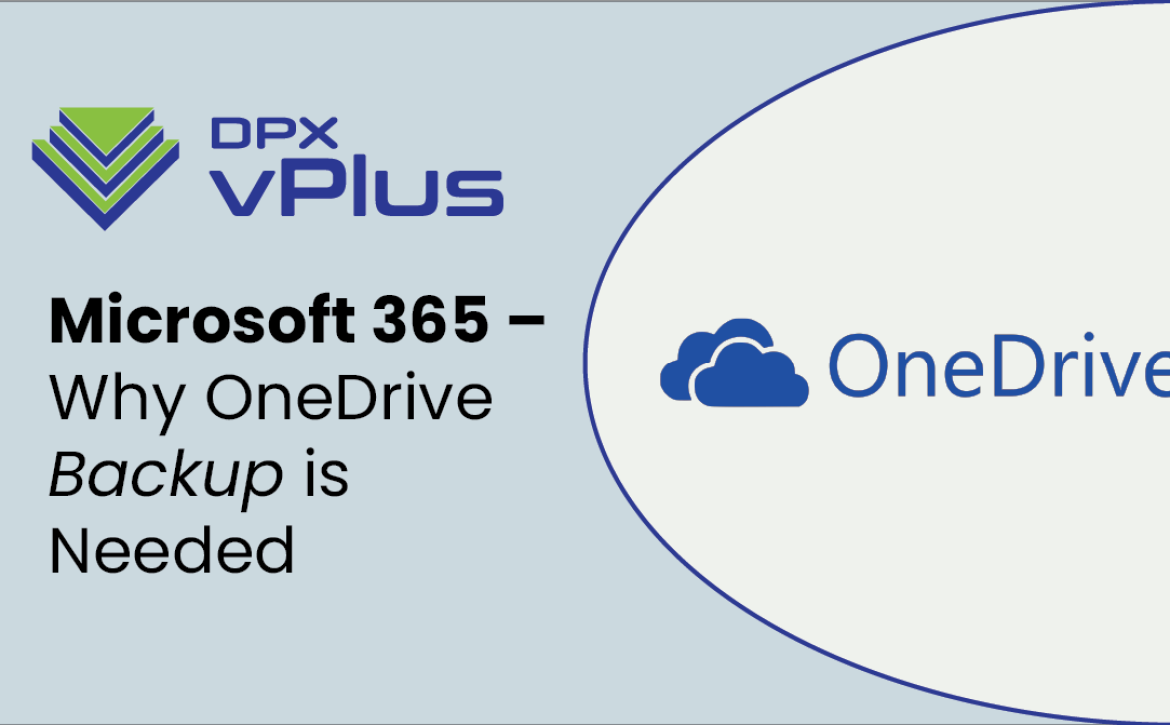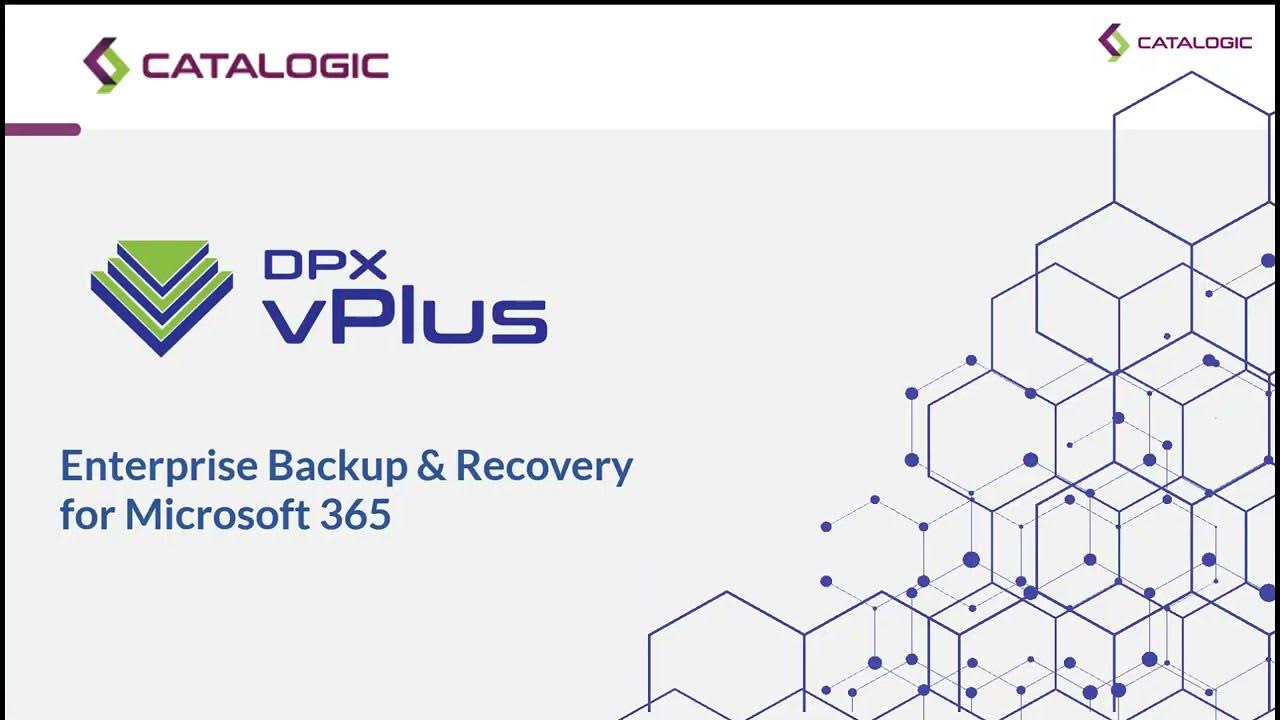Microsoft 365 – Why OneDrive Backup is Needed
It is clear that the cloud is replacing physical storage formats due to its collaboration and access features, its cost-effectiveness, and data security and resiliency. As organizations continue to store more and more, cloud storage will continue to increase in popularity. One of the most popular forms of cloud storage used by organizations today is Microsoft OneDrive.
OneDrive is a productivity tool that allows users to synchronize files across different endpoints and share those files with other users in the enterprise. It is one of the several applications that make up the Microsoft 365 suite. The other applications include Exchange, Teams, and SharePoint. OneDrive is designed for users to store and share files, along with other collaboration capabilities that make not only daily jobs easier but also the management of shared files across different team members. The great thing about OneDrive being a cloud storage destination is that it enables employees to access their business files, as well as files shared by other people or teams, from different connected devices. In today’s world of remote working, access flexibility is incredibly useful.
However, along with these valuable benefits, comes one major risk: data loss from a lack of OneDrive backups.
How Microsoft 365 Protects Your Data
Many may be thinking, “If Microsoft is providing the cloud storage, wouldn’t they be responsible for protecting the data in OneDrive?” The answer to that question is “Not exactly.” In the world of software-as-a-service or the SaaS model, data protection is considered a shared responsibility. Though Microsoft does take on the responsibility of application and infrastructure uptime, and it does provide many built-in features that feel like Office 365 backups, none of them really provide what is truly needed when it comes to Microsoft 365 backup and disaster recovery. Actual data protection against site outages, accidental deletion, and ransomware is the end user’s responsibility.
Now, it was mentioned above that Microsoft does have native tools that help with some data protection. These include things like the Recycle Bin, deletion retention policies, and file versioning. In a similar article about Why SharePoint backup is needed. these features are described in greater detail. But at the end of the day, these features only protect you in the short term, and do not truly protect you against data loss.
Lack of Microsoft 365 Backup Leaves You Exposed
Because of this shared responsibility and lack of true built-in data protection features, it is critical that end users perform regular OneDrive backups (and other Microsoft 365 backups). Much like information stored on the internet, there are many threats to your data stored in OneDrive However, due to the shared nature of files in OneDrive, these threats can become even more dangerous.
Accidental Deletion
Because of the synchronization of files in OneDrive, something as simple as an accidental deletion of files becomes much more difficult to recover from. When an end user makes a change to a file (intentional or not), that change is synchronized with local storage on user endpoints, and then faithfully replicated to the OneDrive copy in the cloud. If the file is not backed up, not only is the original file gone for good, but any change is replicated across all connected devices in the cloud.
Malware/Ransomware
Keeping that in mind, you can imagine how disastrous a malware or ransomware attack would be if it were able to access data in OneDrive. Because OneDrive offers its users a straightforward way to sync the work that they have done offline to their storage as soon as they go online, this exposes your IT structures to a greater risk of external threats. Imagine an end user’s endpoint is infected with some form of malware and while offline this malware gets access to this user’s shared OneDrive. This malware may be encrypting or mass-deleting files, and then, when back online these changes are synchronized in the cloud. This malware can then spread further, slowly infecting all of the information, as well as other connected devices that are used to access the OneDrive data. This is even more serious if your company uses a BYOD (“Bring your own device”) model for remote and/or on-site work.
Retrieval of Data from Past Employees
When an employee leaves an organization, and their Microsoft 365 license is relinquished, Microsoft allows 30 to 90 days of time for the organization to migrate the user’s data or store a copy of the OneDrive data in another location, before it is deleted. Oftentimes, in order to recover unused cloud storage, organizations tend to delete unnecessary, redundant or outdated data. Without OneDrive backup in place, there is no way to recover specific files that might not seem important until later in the future
Regulatory Compliance
It is not uncommon for organizations, especially in certain industries, to be subject to several different legal regulations like Sarbanes Oxley, HIPAA, or the GDPR. These regulations often dictate details about what type of data will be stored, how it can be gathered, and how long the companies are obligated to retain that data. These regulations also may require a second or backup copy of certain data to be stored at an alternate site. If these organizations fail to hold onto that second copy or cannot produce a certain piece of data when requested, they may face serious legal or regulatory repercussions.
Effective OneDrive Backup and Recovery
All of the above are reasons why organizations are utilizing DPX vPlus for their OneDrive backup. If you are serious about the security of your data stored, shared, and processed in Microsoft OneDrive, and other applications like Exchange, SharePoint, and Microsoft Teams, you should give DPX vPlus a try.
DPX vPlus is a Microsoft 365 backup and recovery solution for SharePoint, Exchange, OneDrive, and Teams. It provides the ability for granular backup and recovery of all aspects of the Microsoft 365 suite. This means that if a SharePoint item, email, contact, calendar item or file is accidentally deleted, modified, or lost, that data can be recovered to its original location, to an alternate user in the cloud, or downloaded locally. A modern, web-based user interface makes administration and backup scheduling simple and efficient. Deduplication, compression and encryption (in transit and at rest), ensures that your data is not only protected, but limits storage requirements and provides a scalable architecture.
If you would like to learn more about DPX vPlus for Microsoft 365, you can request a live demo or even get a 30-day trial copy to try it for yourself. You can also watch a pre-recorded demonstration of vPlus backup and recovery for Microsoft 365. We’ll be happy to help you set things up.


 SharePoint has been the go-to-service for organizations when it comes to managing large volumes of shared data in the cloud.
SharePoint has been the go-to-service for organizations when it comes to managing large volumes of shared data in the cloud.
